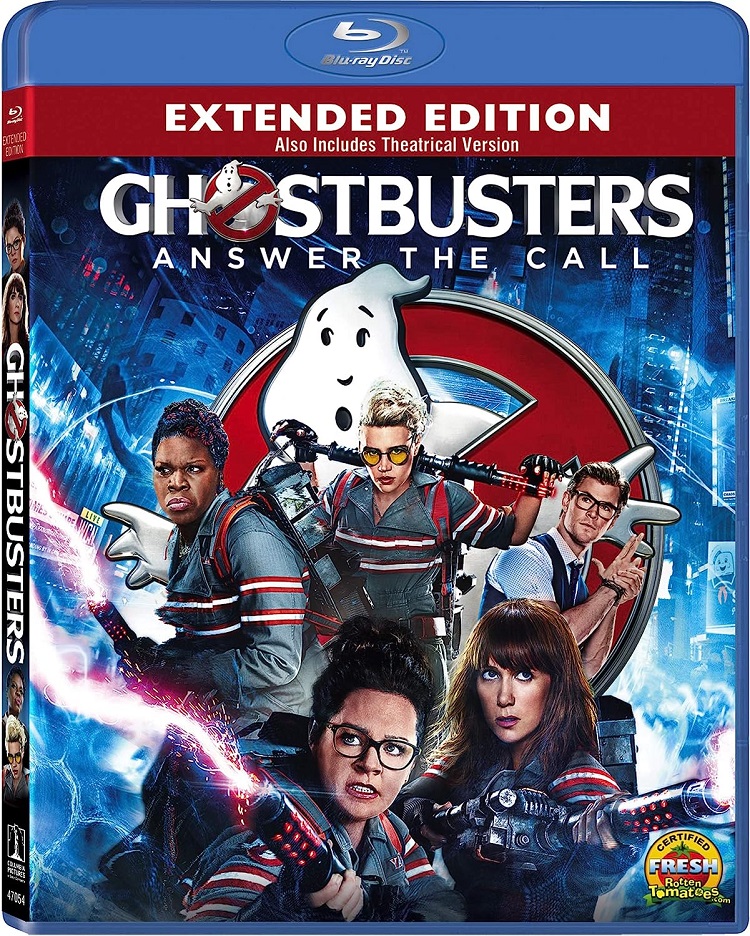
Written by Kristen Lopez
To say that a Ghostbusters reboot courts controversy is like saying water is wet. It took, for lack of a better word, balls. Is the hate warranted? Considering the animosity stems from the film putting women in male roles, hell no. “No self-respecting scientist believes in the paranormal,” Kristen Wiig’s Erin Gilbert says and I’d have to chime in with “or the idea of women playing Ghosbusters” in spite of all the cosplay to the contrary. Ghostbusters is a fun summer movie that may try too hard to justify its own existence and feminist impulses, but there is plenty of entertainment derived from it all.
When New York City experiences an influx of paranormal activity, four women with an interest in the supernatural gear up to take the ghosts down.
Director Paul Feig has cemented a career on turning over male-dominated genres to the ladies, whether it’s the buddy comedy (The Heat) or the James Bond-esque Spy. Ghostbusters is Feig and company’s biggest bet to date, taking an established property and hitting the reset button.
The New York Feig and company present is realistic; people don’t believe in ghosts which leads to a running gag of the Ghostbusters publicly capturing ghosts only to have the mayor and his aide (played by Andy Garcia and Cecily Strong) announce they’re frauds…while applauding the ladies for their actions off the record, in a nod to the backhanded apologies and other concessions people are prefacing with before talking about this film.
Katie Dippold and Feig’s script blends the Ghostbusters mythos with a new examination of gender. Several jokes call back to the internet smear campaign against the project from its inception, with Wiig delivering the line, “ain’t no bitches gonna hunt no ghosts” as probably the classiest comment the film has received from YouTube commenters. Charles Dance, in the best movie he’s in this summer, cameos as Erin’s boss, demanding she work twice as hard to get tenure, with the unspoken implication it’s because she’s a woman; her recommendations from Princeton aren’t good enough and there’s the matter of what she’s wearing which, he claims, is hindering her. Erin’s pointed comment about how easy “it is to be the naysayer when you’re sitting around doing nothing” calls out critics and trolls, but it goes back to the film itself and its requirement to pay homage to the original while being unique; apologizing for being a female production while calling out those who would, but it all makes sense from an economic perspective. This stacks the deck, building the film up to heights it might never achieve, while almost acting as a self-referential apology.
Being Feig alumni and past co-stars, Wiig and McCarthy already have established chemistry with each other. Their characters Erin and Abby have the strongest backstory, being best friends since junior high, but that makes them the more boring BFF’s in the group. Their relationship doesn’t need any additional moments of camaraderie because it’s delivered via dialogue, ultimately making Erin’s self-sacrifice at the end forced. The true scene stealers are the ones who live within the film’s universe and seemingly have no life outside it (I’m unsure if that’s a positive or negative): Kate McKinnon’s Jillian Holtzmann and Leslie Jones’ Patty Nolan.
McKinnon is a whimsical joy as the wacky engineer of the various Ghostbusters gadgetry. Smart, fearless, and rocking a devilish twinkle in her eye, the third act beat-down she delivers on some ghosts nominates for the lead of an action franchise. If you didn’t think McKinnon was the next comic genius after watching her work on Saturday Night Live, her performance here seals the deal. Jones does a lot with a pretty thankless character. She avoids the typical bug-eyed caricatures many African-American actors fell into when they saw ghosts in old movies, but the film is too eager to point out how underwritten Patty’s character is, as if that makes it okay for being so. The line “we are three scientists, plus Patty” does nothing but point out the failure to do something regarding race, as well as gender.
The general hero’s journey routinely plays out with the women banding together, coming apart, and defeating a big bad, conveniently played a lonely, unattractive white guy (Neil Casey). As a villain, Casey’s Rowan has rather mundane motivations; the “I’m being ignored so I’ll become ominipotent and rule them” story endlessly mined in drama and Disney movies. His grand scheme to bring ghosts from New Yorks “glory days” would be interesting if there was any foundation behind it. What’s the mythology behind this. Why is Rowan able to control some people, but not the Ghosbusters? And why does Rowan have such an interest in turn-of-the-century New York in the first place? Is it because his job entails him wearing a Tower of Terror costume? I actually assumed his mention of the “glory days” was going to put the Ghostbusters back in 1984…now THAT would be a New York to be frightened by.
There’s no appeasing those already gunning for Ghostbusters failure. But, if you’re open to new experiences there’s nothing better than a quartet of ladies ready and willing to strap a couple of proton packs on their back and bust some ghosts. Ghostbusters is the entertaining, witty thrill ride of the summer and I ain’t afraid of no ghost!